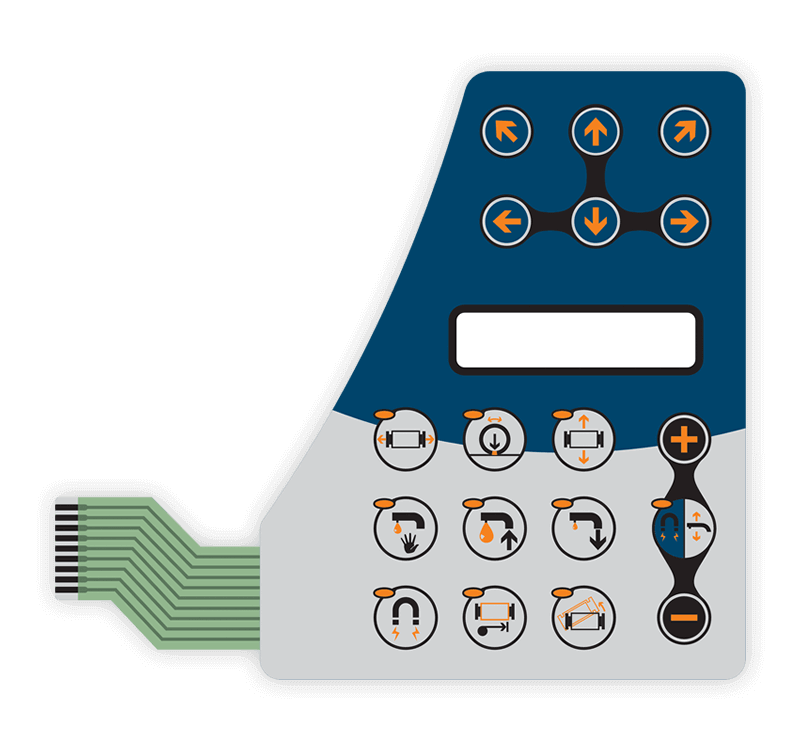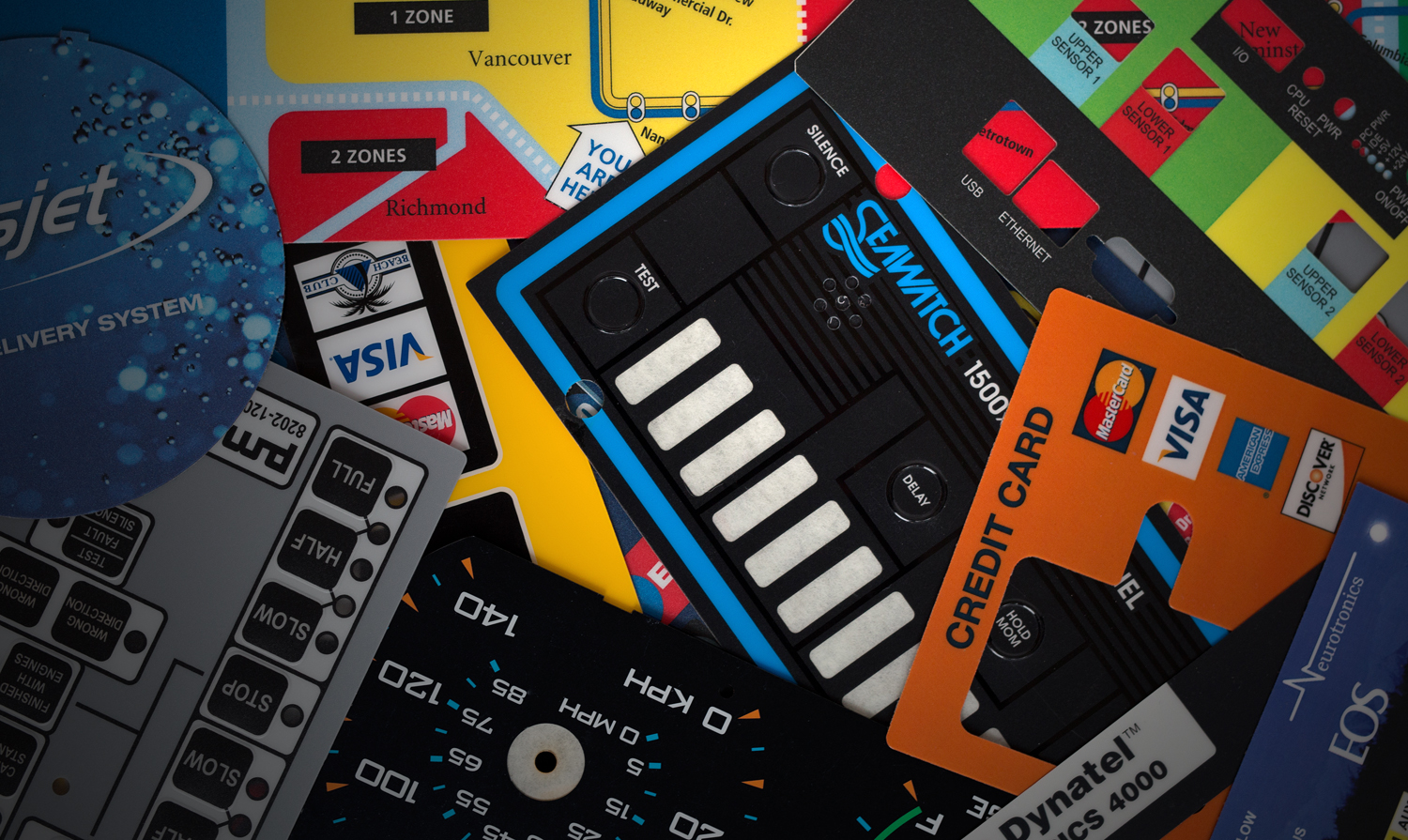The Latest Trends in Graphic Overlays for Control Panels and Touch Panels
The Latest Trends in Graphic Overlays for Control Panels and Touch Panels
Blog Article
Comprehending Just How Graphic Overlays Job to Boost Your Innovative Projects
Graphic overlays serve as an essential part in the world of imaginative jobs, enhancing both aesthetic interaction and audience engagement. By recognizing their performance and potential applications, one can effectively boost not only the aesthetic allure however also the quality of complicated details. The effective integration of these overlays calls for cautious consideration of style principles and purposes. As we check out the various kinds and best methods, it becomes evident that the appropriate method can substantially influence job results, leaving us to consider just how to harness these tools for optimal effect.
What Are Graphic Overlays?
Graphic overlays are aesthetic elements that are put on top of a base image or interface to improve communication and individual experience. They offer different objectives, consisting of giving extra details, guiding user communication, and improving visual appeal. Typical applications of visuals overlays can be found in digital user interfaces, marketing, and instructional materials.

Graphic overlays are often produced utilizing layout software, allowing developers to manipulate openness, color, and size to accomplish the preferred result. They can be dynamic or fixed, with computer animations that attract the visitor's eye and boost engagement. The strategic use of visuals overlays not just boosts aesthetic pecking order yet additionally aids in providing a clear and systematic message. Recognizing exactly how to efficiently execute graphic overlays is important for designers intending to boost their innovative projects.

Benefits of Making Use Of Graphic Overlays
Utilizing visuals overlays can significantly improve the efficiency of visual communication throughout various tools. Among the key benefits is the capacity to convey complicated details succinctly. By layering graphics, text, and pictures, overlays facilitate the discussion of information in a more digestible layout, making it easier for target markets to comprehend essential ideas quickly.
Additionally, visuals overlays can enhance aesthetic appeal, attracting focus to details elements within a design. This is specifically useful in marketing and advertising, where recording the visitor's interest is critical. The tactical use shades, forms, and typography in overlays can develop a engaging and natural visual narrative, boosting brand name recognition.
Additionally, graphic overlays offer versatility in style. They allow creators to adapt content for different systems without going back to square one, guaranteeing uniformity across different networks. This adaptability is critical in today's electronic landscape, where content has to be enhanced for diverse devices and formats.
Kinds of Graphic Overlays
When taking into consideration the numerous kinds of visuals overlays, it is necessary to recognize their diverse applications across various sectors. Graphic overlays can be classified largely into 3 kinds: practical, ornamental, and informational.
Functional overlays are created to enhance the usability of an item. Frequently found in digital tools, these overlays often offer tactile comments via elevated switches or textured surfaces, enhancing user communication. They can likewise work as a protective layer, guarding the underlying components from damage.
Attractive overlays concentrate on visual improvement, allowing brands to express their identification with vibrant designs and custom-made graphics. These overlays prevail in product packaging, marketing, and point-of-sale materials, where aesthetic allure is crucial for attracting consumers.
Informational overlays, on the other hand, are utilized to communicate essential data or guidelines. They can be seen in applications such as signs, customer guidebooks, and instructional graphics, where clearness and readability are extremely important.
Each kind of graphic overlay serves a special purpose, adding to the total efficiency of innovative projects while resolving certain needs within various industries. Recognizing these distinctions is essential for picking the appropriate overlay for your task.
Ideal Practices for Implementation
To guarantee the successful execution of visuals overlays, it is essential to establish a clear understanding of the task's objectives and the particular demands of the end-users. Begin by conducting comprehensive research study to determine the target audience and their preferences, as this will notify design options and functionality.
Following, develop a thorough strategy that outlines the overlay's purpose, integration, and layout process. This plan ought to consist of customer interface factors to consider, making certain that overlays boost rather than block the customer experience - Graphic Overlays. Think about the aesthetic hierarchy and maintain uniformity in style components, such as shade fonts, systems, and icons, to promote Get the facts brand comprehensibility
Testing is vital; collect feedback from a representative sample of users to identify possible issues and areas for renovation. Iterate on the style based on individual input and performance data. Additionally, guarantee compatibility throughout numerous devices and systems to optimize accessibility.
Devices for Creating Overlays
Producing reliable visuals overlays needs the right tools to translate layout principles into functional applications. Various software and platforms are readily available, each tailored to specific demands and ability degrees.
Adobe Photoshop and Illustrator are market criteria, using considerable abilities for developing and adjusting overlays. These devices provide innovative functions such as layer administration, mixing modes, and vector graphics, making it possible for designers to produce high-quality and intricate overlays.
For those look at this now looking for a more user-friendly approach, Canva and Figma are exceptional choices (Graphic Overlays). Canva's instinctive user interface permits individuals to produce overlays quickly utilizing pre-designed layouts, while Figma assists in collaborative style in real-time, making it suitable for groups
Additionally, open-source choices like GIMP and Inkscape give durable functionalities without the connected costs of exclusive software. These devices permit flexibility in design and can fit numerous file styles, making sure compatibility throughout various platforms.

Conclusion
In conclusion, graphic overlays serve as effective tools for boosting innovative projects by offering visual quality, aesthetic appeal, and brand consistency. By comprehending the basic principles and benefits linked with visuals overlays, designers can significantly improve the high quality and effectiveness of their visual interactions.
Graphic overlays offer as a critical element in the world of imaginative tasks, improving both aesthetic communication and audience engagement.Graphic overlays are commonly created making use of style software application, enabling designers to control transparency, shade, and dimension to accomplish the site web wanted effect.Moreover, visuals overlays can increase aesthetic charm, attracting focus to certain components within a design.Additionally, visuals overlays give versatility in layout.In conclusion, graphic overlays serve as effective devices for enhancing creative jobs by giving visual clearness, visual appeal, and brand uniformity.
Report this page